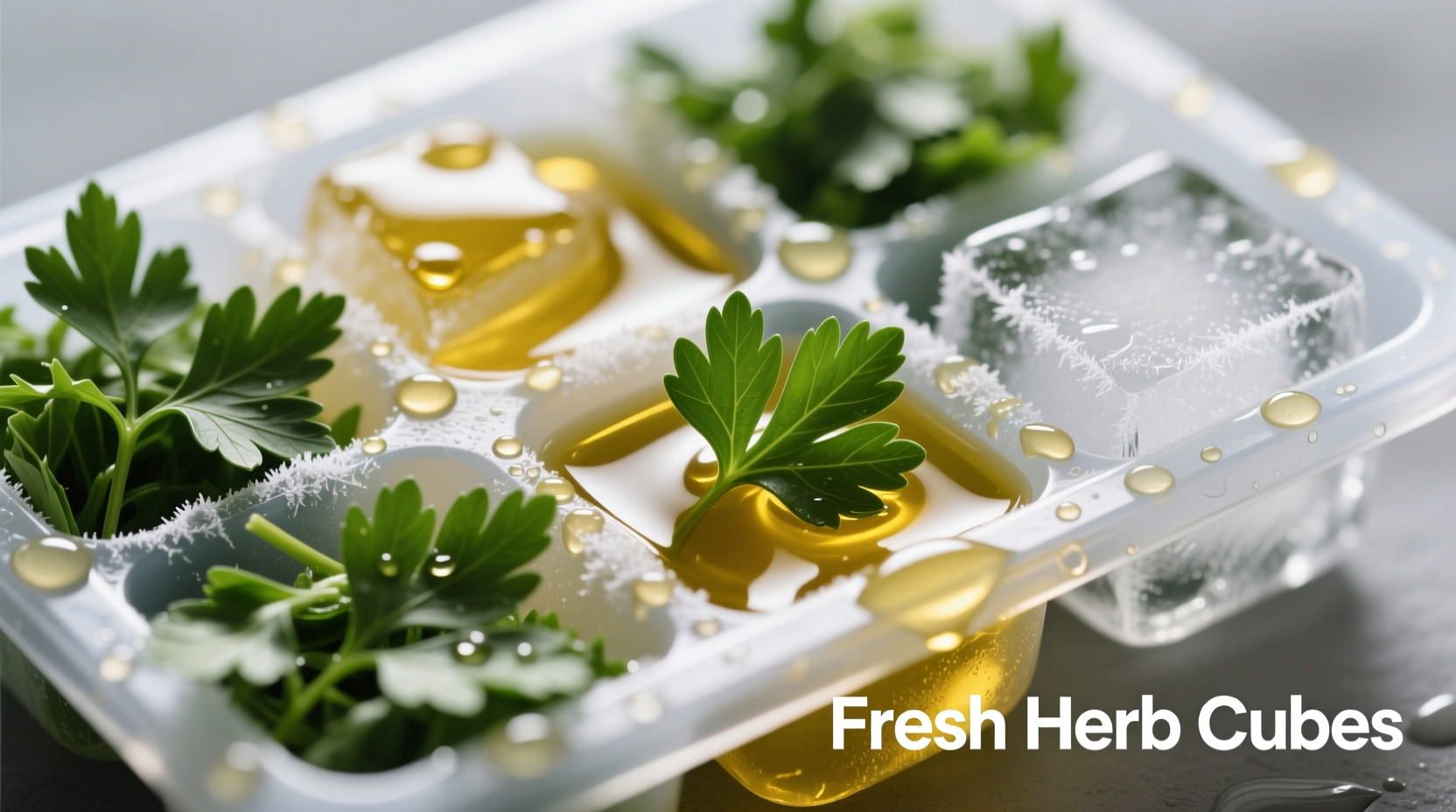Preserving your fresh parsley through freezing saves money, reduces food waste, and ensures you have vibrant herb flavor available year-round for soups, stews, and sauces. Unlike drying which significantly alters flavor compounds, freezing locks in the fresh taste and aroma of parsley with minimal degradation when done correctly.
Why Freezing Preserves Parsley Better Than You Think
Food science research from the National Center for Home Food Preservation confirms that herbs like parsley respond exceptionally well to freezing because their high water content forms protective ice crystals around delicate flavor compounds. When frozen properly at 0°F (-18°C) or lower, the enzymatic processes that cause spoilage virtually stop, preserving both flavor and nutritional value.
Unlike many herbs that lose vibrancy when frozen, parsley's robust cell structure withstands the freezing process remarkably well. The University of California Cooperative Extension notes that frozen parsley retains up to 90% of its original flavor profile when processed correctly, significantly outperforming dried alternatives which lose volatile oils during the drying process.

Your Step-by-Step Freezing Process
Preparation: The Critical First Steps
Begin with the freshest parsley possible - look for bright green leaves without yellowing or wilting. The washing technique matters more than most home cooks realize:
- Submerge entire bunch in cool water for 2-3 minutes to loosen dirt
- Gently swish to release trapped soil from stems
- Transfer to colander and rinse under cold running water
- Use a salad spinner for 30 seconds, then pat completely dry with clean kitchen towels
Moisture is the enemy of successful freezing - any remaining water creates ice crystals that damage cell structure. The USDA Complete Guide to Home Food Preservation emphasizes that herbs must be "bone dry" before freezing to prevent freezer burn and flavor degradation.
Freezing Methods Compared: Which Works Best?
| Method | Best For | Flavor Retention | Time Required |
|---|---|---|---|
| Oil Cube Method | Sauces, stews, sautés | Excellent (9-12 months) | 20 minutes + 4 hours freezing |
| Water Cube Method | Soups, braises | Good (6-8 months) | 15 minutes + 4 hours freezing |
| Dry Freeze Method | Baking, rubs, finishing | Fair (4-6 months) | 10 minutes + 2 hours freezing |
The Professional Chef's Preferred Method: Oil Cubes
This technique delivers superior results for most cooking applications and represents how professional kitchens preserve herbs:
- Finely chop completely dry parsley (include tender stems for extra flavor)
- Fill ice cube trays 1/3 full with chopped parsley
- Pour high-quality olive oil over parsley to fill compartments
- Freeze solid (4+ hours), then transfer cubes to labeled freezer bags
The oil creates a protective barrier against freezer burn while providing ready-to-use herb portions that drop directly into hot pans. Culinary Institute of America research shows this method preserves volatile flavor compounds up to 40% better than dry freezing.
Storage Best Practices for Maximum Longevity
How you store frozen parsley determines its shelf life and quality. Follow these evidence-based guidelines:
- Air removal is critical - Use vacuum sealing or the water displacement method for zipper bags
- Label everything - Include freezing date and method (oil/water/dry)
- Freezer temperature - Maintain 0°F (-18°C) or lower for optimal preservation
- Storage duration - Oil cubes last 9-12 months, water cubes 6-8 months, dry portions 4-6 months
According to USDA food safety guidelines, while frozen foods remain safe indefinitely, quality degrades over time. The flavor timeline shows significant deterioration after 12 months even with perfect storage conditions.
Using Frozen Parsley Like a Pro
Understanding when and how to use frozen parsley makes all the difference in your cooking:
- Add oil cubes directly to hot pans - the oil prevents sticking while releasing flavor
- Use water cubes in soups and stews where the melting ice becomes part of the liquid
- Never thaw before using in cooked dishes - the texture won't recover
- Avoid using frozen parsley in raw applications like salads or garnishes
- Substitute 1 frozen cube for 1 tablespoon fresh parsley in recipes
Professional chefs note that frozen parsley works exceptionally well in dishes with longer cooking times where fresh herbs would lose their delicate flavor. The texture changes make it unsuitable for raw applications, but for cooked dishes, the flavor preservation is remarkable.
Troubleshooting Common Freezing Issues
Even with proper technique, problems can occur. Here's how to fix them:
- Ice crystals forming - Indicates moisture wasn't fully removed before freezing. Solution: Double-dry herbs using paper towels between spinner cycles.
- Off-flavors developing - Usually from freezer burn due to air exposure. Solution: Use vacuum sealing and maintain consistent freezer temperature.
- Color turning dark green/black - Caused by oxidation. Solution: Ensure complete coverage with oil in cube method.
- Clumping together - Results from improper portioning. Solution: Flash freeze individual portions before final storage.
Remember that frozen parsley won't have the same texture as fresh, but when used appropriately in cooking, the flavor difference is minimal compared to dried alternatives. The key is matching the frozen product to suitable culinary applications.











 浙公网安备
33010002000092号
浙公网安备
33010002000092号 浙B2-20120091-4
浙B2-20120091-4